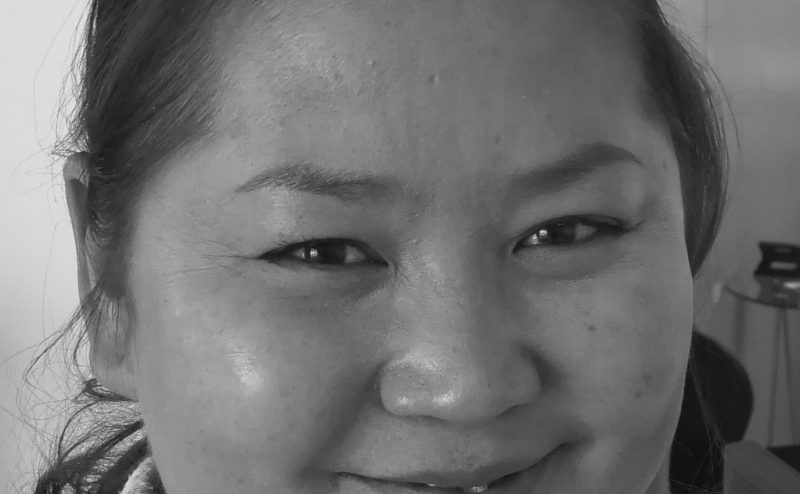
Zaya Bayaraa (1983) – Gobi girl
 Ne znam šta mi je više ostalo u lepom sećanju iz Mongolije,da li gostoljubivost, uspešan sastanak, divni ljudi ili Gobi pustinja. Mislim da je sve zajedno, ali da svako među prvim utiscima je susret sa Zayom koju nam je bila vodič na putovanju u pustinju Gobi. Ono što je interesantno da je to njoj hobi, zato što voli prirodu i putovanje. Inače radi u rudarskoj industriji. A ako vam kažemo da putovanje u Gobi predstavlja vožnju van puta više od 500 km, onda s pravom možete da se zapitate kako to truckanje neko voli. Odgovor je prilično jednostavan, Gobi je mesto magične lepote, iako predstavlja zaista surovu prirodu, jer su u njoj ljudi i životinje našli načina da prežive i može se reći uživaju u slobodi. Kako drugačije nazvati stada slobodnih konja, kamila, ovaca i koza koji bez ikakve kontrole lutaju pustinjom. Sem toga magiji doprinose peščane dine, klifovi iz vremena dinosaurusa, doline i kanjoni neviđene lepote. Neko to sve poredi sa Grand kanjonom, neko sa predelima sa drugih planeta, a suština je da je to samo delić od više od milion kvadratnih kilometra površine (tačnije 1.295 milion km² što je 15 puta više od teritorije Srbije). Međutim, ono što je najveći utisak je nomadski način života ljudi koji iako nisu u potpunosti odvojeni od civilizacije kao njihovi preci, žive gotovo na identičan način. Okosnica svega je Ger ili specifična montažna kuća ili veliki okrugli šator, ali sigurno više od toga jer u njemu postoje pravi kreveti, peć na drva, kupatilo ili kuhinja, sve u zavisnosti od namene. Neki Gerovi izgledaju komforno kao stan, a posebno su uređena naselja za turiste. Naravno i to, kao sve druge informacije teško da bismo dobili da nije bila Zaye. S druge strane izgleda da smo se i mi dopali Zayi, jer kaže da nismo kao drugi turisti koji zakeraju, već nam je sve odgovaralo, čak i smo malo i dremali dok smo prelazili ta neverovatna rastojanja po pustinjskim neravnim putevima. U svakom slučaju nezaboravna avantura. Bayarlalaa Zaya ili hvala na mongolskom.
Ne znam šta mi je više ostalo u lepom sećanju iz Mongolije,da li gostoljubivost, uspešan sastanak, divni ljudi ili Gobi pustinja. Mislim da je sve zajedno, ali da svako među prvim utiscima je susret sa Zayom koju nam je bila vodič na putovanju u pustinju Gobi. Ono što je interesantno da je to njoj hobi, zato što voli prirodu i putovanje. Inače radi u rudarskoj industriji. A ako vam kažemo da putovanje u Gobi predstavlja vožnju van puta više od 500 km, onda s pravom možete da se zapitate kako to truckanje neko voli. Odgovor je prilično jednostavan, Gobi je mesto magične lepote, iako predstavlja zaista surovu prirodu, jer su u njoj ljudi i životinje našli načina da prežive i može se reći uživaju u slobodi. Kako drugačije nazvati stada slobodnih konja, kamila, ovaca i koza koji bez ikakve kontrole lutaju pustinjom. Sem toga magiji doprinose peščane dine, klifovi iz vremena dinosaurusa, doline i kanjoni neviđene lepote. Neko to sve poredi sa Grand kanjonom, neko sa predelima sa drugih planeta, a suština je da je to samo delić od više od milion kvadratnih kilometra površine (tačnije 1.295 milion km² što je 15 puta više od teritorije Srbije). Međutim, ono što je najveći utisak je nomadski način života ljudi koji iako nisu u potpunosti odvojeni od civilizacije kao njihovi preci, žive gotovo na identičan način. Okosnica svega je Ger ili specifična montažna kuća ili veliki okrugli šator, ali sigurno više od toga jer u njemu postoje pravi kreveti, peć na drva, kupatilo ili kuhinja, sve u zavisnosti od namene. Neki Gerovi izgledaju komforno kao stan, a posebno su uređena naselja za turiste. Naravno i to, kao sve druge informacije teško da bismo dobili da nije bila Zaye. S druge strane izgleda da smo se i mi dopali Zayi, jer kaže da nismo kao drugi turisti koji zakeraju, već nam je sve odgovaralo, čak i smo malo i dremali dok smo prelazili ta neverovatna rastojanja po pustinjskim neravnim putevima. U svakom slučaju nezaboravna avantura. Bayarlalaa Zaya ili hvala na mongolskom.
♥
I do not know what left me as the nice memory of Mongolia, whether hospitality, successful meeting, wonderful people or Gobi Desert. I think it’s all together, but among the first impressions is meeting Zaya who was our guide on the journey to the Gobi Desert. What is interesting is that guiding is her hobby, because she loves nature and travel. Otherwise, she works in the mining industry. And if we tell you that the trip to Gobi is a journey off the road more than 500 km, then you can wonder how someone likes that trucking. The answer is quite simple, Gobi is a place of magical beauty, although it represents a truly raw nature, because people and animals have found ways to survive and enjoy freedom. How else to call the herds of free horses, camels, sheep and goats who wander the desert without any control. Additionally, magic is part of sandy dunes, cliffs from the time of dinosaurs, valleys and canyons of unprecedented beauty. Someone compares it with the Grand Canyon, someone with areas from other planets, and the essence is that it is only a fraction of more than a million square kilometres of area (exactly 1.295 million km², which is 15 times more than the territory of Serbia). However, what is the greatest impression is the nomadic way of living of people who, although not entirely separate from civilization as their ancestors, live almost identically. The backbone of everything is Ger or a specific prefabricated house or large round tent, but certainly more than that because there are real beds, stove, bathroom or kitchen, all depending on purpose. Some Gers look comfortable as an apartment, and especially those are settled for tourists. Of course, like all the other information we would hardly got if Zaya wasn’t there. On the other hand, it seems that we liked Zaya, because she says that we are not like other tourists who are complaining all the time, but we were flexible, even we did a nap as we crossed those incredible distances along the desert of uneven roads. In any case, an unforgettable adventure. Bayarlalaa Zaya or thanks in Mongolian.

